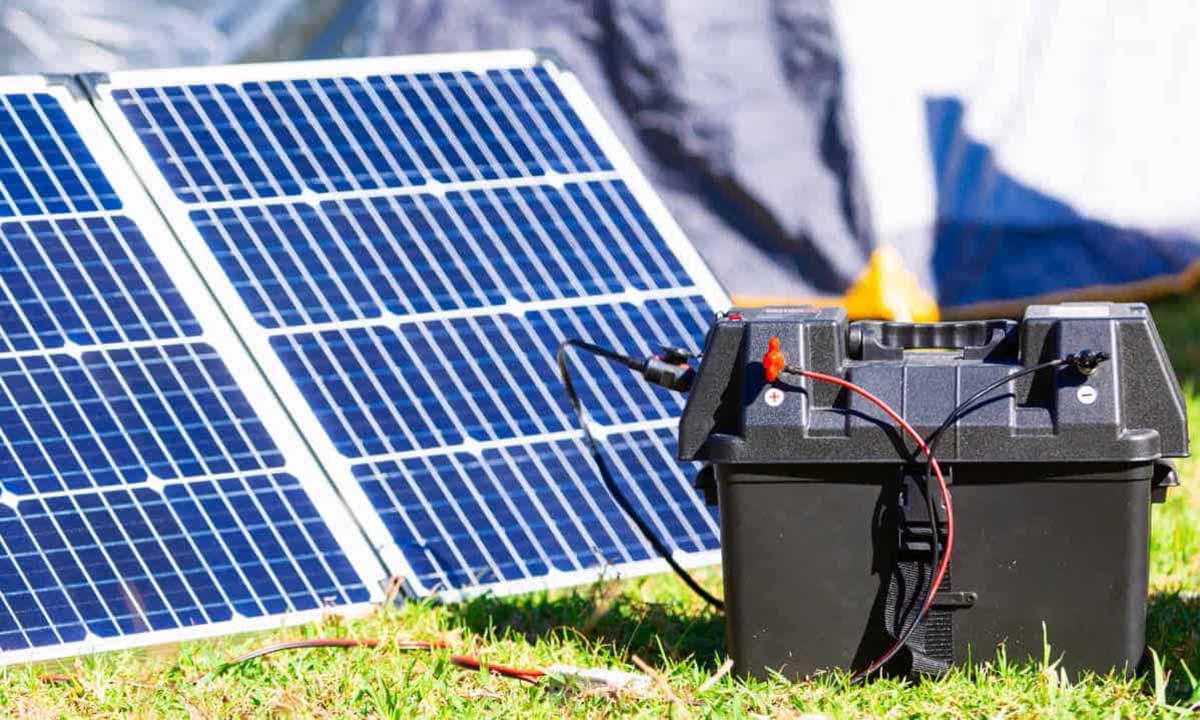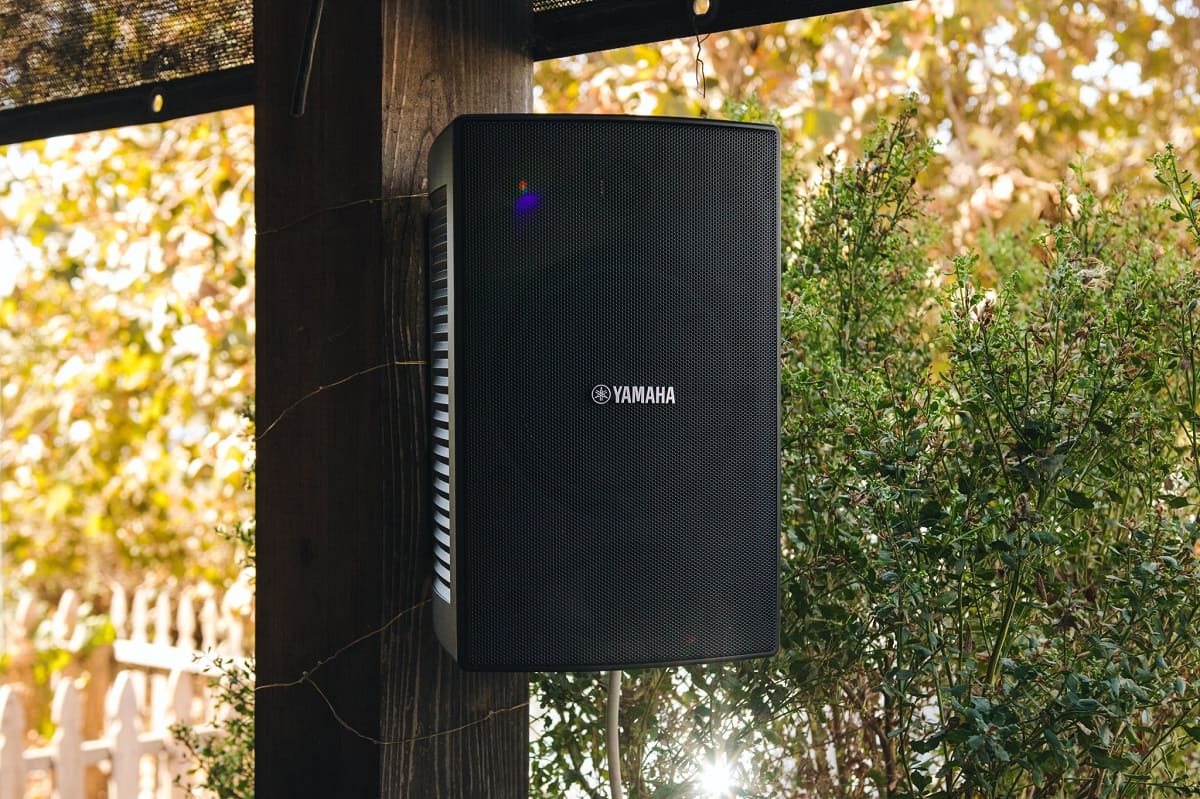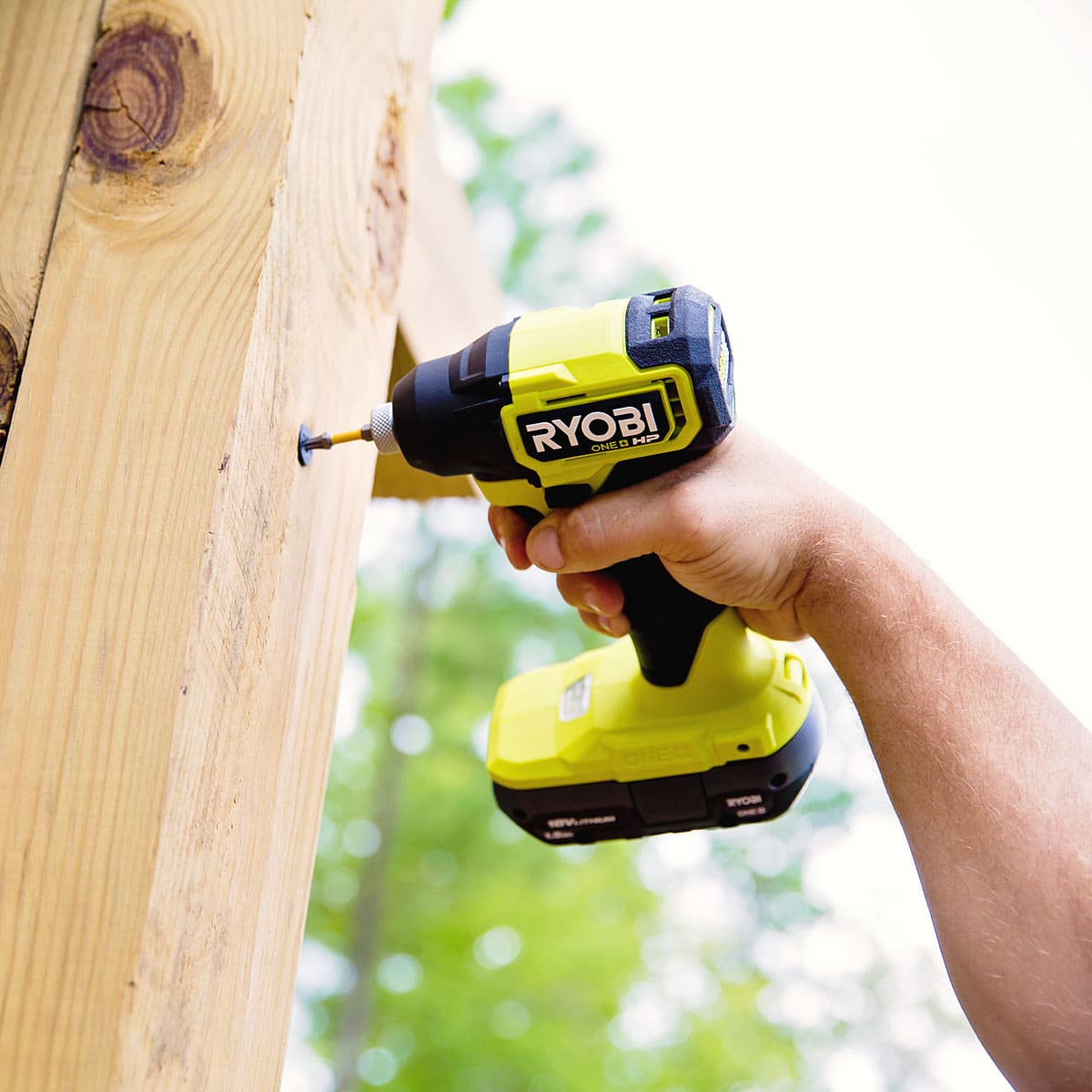

Articles
How To Store Power
Modified: October 20, 2024
Learn how to store power efficiently and effectively with our informative articles. Discover sustainable solutions and tips for maximizing energy usage.
(Many of the links in this article redirect to a specific reviewed product. Your purchase of these products through affiliate links helps to generate commission for Storables.com, at no extra cost. Learn more)
Introduction
Welcome to the world of power storage! In today’s rapidly advancing technological landscape, finding efficient and sustainable ways to store power is becoming increasingly important. Whether it’s for residential, commercial, or industrial purposes, having a reliable and cost-effective power storage solution can bring numerous benefits to individuals and businesses alike.
Power storage refers to the process of capturing, storing, and releasing electricity when needed. Traditionally, power has been generated and consumed in real-time, meaning that electricity is generated at power plants and sent directly to customers through transmission lines. However, with the advent of renewable energy sources such as solar and wind, which are intermittent in nature, the need for effective power storage solutions has become crucial.
In this article, we will explore the world of power storage systems, their benefits, the different types of technologies available, how to choose the right solution, and considerations for implementation, maintenance, and safety. By the end, you’ll have a comprehensive understanding of power storage and how it can revolutionize the way we use electricity.
So, whether you’re a homeowner looking to reduce your reliance on the grid, a business owner seeking to optimize energy usage, or an industry professional involved in the energy sector, keep reading to discover the exciting opportunities that power storage presents.
Key Takeaways:
- Power storage systems offer energy cost savings, independence from the grid, and environmental benefits, revolutionizing the way we generate and consume electricity for a cleaner and more sustainable future.
- Choosing the right power storage solution involves assessing power and energy needs, considering cost and efficiency, and prioritizing safety, scalability, and integration for optimal performance and long-term reliability.
Read more: How To Store Power Tool Batteries
Understanding Power Storage
Before delving into the intricacies of power storage, let’s first establish a basic understanding of how it works. At its core, power storage involves capturing electricity from various sources, such as solar panels or the grid, and storing it in a device or system for later use.
The primary purpose of power storage is to bridge the gap between electricity generation and consumption. It allows excess energy generated during periods of low demand to be stored and used during peak demand times when the supply is typically higher. This concept is commonly referred to as “load shifting” and helps to optimize the usage of electricity resources.
Power storage systems typically consist of three main components: the energy source, the storage device, and the control system. The energy source can vary depending on the system’s design and purpose. It can be renewable energy sources, such as solar or wind, the electrical grid, or even diesel generators. The storage device, commonly a battery, is responsible for holding and releasing the stored energy. Lastly, the control system manages the flow of electricity, ensuring that it is efficiently stored and distributed.
Power storage systems can vary in size and capacity, ranging from small, portable devices like power banks for personal use to large-scale industrial installations that can store and deliver massive amounts of electricity. The advancements in technology have led to the development of more compact and higher-capacity batteries, making power storage solutions increasingly accessible and efficient.
One of the significant advantages of power storage is its ability to provide energy independence and resilience. It allows users to reduce their dependency on the grid, especially during power outages or times of high electricity demand. For example, homeowners with solar panels and a battery storage system can store excess solar energy generated during the day and use it during the evening or during blackouts.
In addition to load shifting and energy independence, power storage also plays a vital role in stabilizing the electrical grid. By storing excess electricity and releasing it when needed, power storage systems can help regulate voltage and frequency fluctuations, ensuring a reliable and stable power supply for consumers.
Now that we have a solid foundation in understanding power storage, let’s explore the numerous benefits it brings to individuals, businesses, and the environment in the next section.
Benefits of Power Storage
Power storage systems offer a plethora of benefits, making them an essential component of the modern energy landscape. These benefits extend to individuals, businesses, and the environment, revolutionizing the way we generate and consume electricity. Let’s delve into some of the key advantages:
- Energy Cost Savings: Power storage systems enable users to store excess electricity during times when the rates are low and use it during peak hours when the rates are high. This practice, known as “peak shaving,” can help reduce energy costs significantly by avoiding expensive peak-demand charges.
- Energy Independence: With power storage, individuals and businesses can become less reliant on the electrical grid. By storing energy generated from renewable sources like solar or wind, users can have a constant, reliable power supply even during grid outages. This independence grants users greater control over their energy usage and ensures continuity in critical operations.
- Increased Grid Stability: Power storage systems play a crucial role in stabilizing the electrical grid. By efficiently storing and releasing electricity, they help regulate voltage and frequency, reducing the risk of power fluctuations and providing a stable power supply to consumers. This stability contributes to the overall reliability and resilience of the grid.
- Load Shifting and Demand Response: Power storage enables load shifting by allowing users to store excess electricity during off-peak hours and use it during high-demand periods. This helps alleviate strain on the grid and reduces the need for additional power generation sources. Furthermore, power storage systems can participate in demand response programs by adjusting electricity consumption based on grid conditions, contributing to grid stability and preventing blackouts.
- Integration of Renewable Energy: Renewable energy sources such as solar and wind are intermittent by nature. Power storage systems serve as a bridge between the fluctuating energy generation and consistent energy demand. By storing excess renewable energy and releasing it when needed, power storage enhances the integration of renewables into the grid, enabling a more sustainable and reliable energy mix.
- Environmental Benefits: Power storage solutions help reduce greenhouse gas emissions by promoting more efficient energy utilization. By storing excess electricity and avoiding the need for additional power generation during peak hours, power storage systems contribute to the overall reduction of fossil fuel consumption and mitigate the negative environmental impact associated with conventional energy sources.
These benefits make power storage systems an invaluable tool for individuals, businesses, and society as a whole. They offer cost savings, energy independence, grid stability, and environmental sustainability, paving the way for a cleaner and more sustainable future.
Next, let’s explore the various types of power storage technologies available in the market to help you choose the right solution for your specific needs.
Types of Power Storage Technologies
Power storage technologies come in various forms, each with its own strengths and applications. Let’s explore some of the most common types of power storage technologies available:
- Battery Storage: Battery storage systems are perhaps the most well-known and widely used type of power storage technology. They store electrical energy in chemical form and can quickly discharge it when needed. Batteries are available in different chemistries, including lithium-ion, lead-acid, and flow batteries. Lithium-ion batteries are known for their high energy density, longer lifespan, and fast charging capabilities, making them popular for both residential and commercial applications. Lead-acid batteries, although less efficient and with shorter lifespans, are still commonly used in applications where cost is a significant factor. Flow batteries offer the advantage of scalability and long-duration discharge, making them suitable for large-scale energy storage projects.
- Pumped Hydro Storage: Pumped hydro storage is one of the oldest and most mature forms of power storage. This technology relies on the gravitational potential energy of water. Excess electricity is used during low-demand periods to pump water from a lower reservoir to a higher one. When electricity is needed, the water is released, passing through turbines to generate electricity. Pumped hydro storage systems offer high energy efficiency and long-duration storage capabilities, often used for large-scale grid applications.
- Flywheel Energy Storage: Flywheel energy storage systems store energy in the rotational kinetic energy of a spinning flywheel. Excess electricity is used to accelerate the flywheel, and when energy is needed, the flywheel’s motion is converted back into electrical energy. Flywheel storage systems are known for their high-power capabilities, rapid response times, and long lifespans. They are often used in applications where short-duration, high-power outputs are required, such as backup power for data centers or critical industrial processes.
- Thermal Energy Storage: Thermal energy storage technologies store energy in the form of heat or cold. This type of storage is commonly used for heating or cooling applications, such as in buildings or industrial processes. Thermal energy storage systems can utilize various mediums, including water, phase-change materials, or molten salts. Excess electricity is used to generate heat or cold, which is stored and later used during periods of high demand, reducing the need for continuous heating or cooling operations.
- Compressed Air Energy Storage (CAES): CAES systems store energy by compressing air and storing it in underground reservoirs or pressurized tanks. When electricity is needed, the compressed air is released, driving a turbine to generate electricity. CAES systems offer the advantage of large-scale storage capacity and can provide extended-duration energy storage. They are often used in conjunction with other power sources, such as natural gas, to improve overall system efficiency.
These are just a few examples of power storage technologies available in the market. Each technology has its own unique characteristics, making it suitable for specific applications and scenarios. When choosing a power storage solution, it’s important to consider factors such as power capacity, energy density, response time, cycle life, and cost-effectiveness.
Now that you have an understanding of the different power storage technologies, let’s move on to the next section, where we’ll explore the considerations for choosing the right power storage solution for your specific needs.
Consider investing in a battery storage system to store excess power generated from renewable sources, such as solar panels or wind turbines. This can help you save money on electricity bills and provide backup power during outages.
Choosing the Right Power Storage Solution
When it comes to selecting the right power storage solution, several factors need to be considered to ensure that it aligns with your specific needs and requirements. Let’s explore some key considerations to help you make an informed decision:
- Power and Energy Requirements: Start by assessing your power and energy needs. Determine how much power you’ll need to store and the duration for which you’ll need it. This will help determine the power capacity and energy storage capacity required for your system.
- Application: Consider the intended application for your power storage system. Are you looking to power your home during outages, reduce peak demand charges for your business, or integrate renewable energy into an industrial facility? Each application may have specific requirements and constraints that impact the choice of storage technology.
- Cost: Understand the cost implications of different power storage technologies, considering not only the upfront investment but also the operational and maintenance costs. Factor in the lifetime costs, including replacements and maintenance, to evaluate the long-term cost-effectiveness of the solution.
- Efficiency: Evaluate the efficiency of the power storage solution. Consider the round-trip efficiency, which refers to the amount of energy that can be retrieved from the system compared to the amount of energy stored. Higher efficiency translates to a more effective use of stored energy.
- Scalability: Consider the scalability of the power storage solution. Will you need to expand or modify the system in the future? Ensure that the chosen technology allows for easy scalability to accommodate changing needs and growth.
- Reliability and Durability: Assess the reliability and durability of the power storage technology. Look for systems with a proven track record and long lifespans. Consider factors such as the cycle life of batteries, the maintenance requirements of the system, and the warranties provided by the manufacturer.
- Safety Considerations: Power storage systems involve electrical components and, in some cases, hazardous materials. Prioritize safety by selecting systems with built-in safety features, such as overcharge and discharge protection, temperature monitoring, and effective cooling mechanisms. Ensure that the chosen technology complies with safety standards and regulations.
- Integration and Compatibility: Consider how the power storage system will integrate with your existing infrastructure, such as solar panels, inverters, or electrical systems. Compatibility and seamless integration are crucial for a smooth and efficient operation.
It’s important to note that selecting the right power storage solution may require consulting with experts in the field or energy professionals who can assess your specific needs and provide tailored recommendations. Taking the time to thoroughly evaluate and understand your requirements will help ensure that you choose the most suitable and effective power storage technology for your needs.
With a clear understanding of the considerations for choosing the right power storage solution, let’s move on to the next section, where we’ll discuss the implementation of power storage systems.
Read more: How To Store Power Tools
Implementing Power Storage Systems
Implementing a power storage system involves several steps to ensure a successful and efficient integration into your existing infrastructure. Here’s a guide to help you through the implementation process:
- Assessment and Planning: Begin by conducting a comprehensive assessment of your energy needs and goals. Determine the size and capacity of the power storage system required to meet your requirements. Assess your available space, electrical infrastructure, and any regulatory or permitting needs that may apply. Develop a clear plan outlining the goals, timelines, and budget for the implementation.
- Technology Selection: Based on your assessment and requirements, select the appropriate power storage technology that aligns with your needs. Consider factors such as power capacity, energy density, efficiency, scalability, and compatibility with your existing infrastructure.
- Procurement: Source the power storage system components from reputable suppliers or manufacturers. Request detailed quotes and compare costs, warranties, and technical support available. Consider factors such as delivery times, installation support, and after-sales service when selecting a supplier.
- Installation: Engage qualified professionals or contractors to install the power storage system. Ensure that the installation adheres to industry standards and safety protocols. Cooperate with the installation team, providing accurate information and access to necessary infrastructure to facilitate a smooth installation process.
- Integration: Configure the power storage system to integrate seamlessly with your existing electrical infrastructure. Connect the necessary components, such as inverters, to ensure proper communication and efficient energy transfer between the power storage system, renewable energy sources, and the grid, if applicable.
- Testing and Commissioning: Perform thorough testing and commissioning of the power storage system to ensure its proper functioning. Verify that all connections, switches, and safety mechanisms are working correctly. Conduct performance tests to evaluate the power storage system’s ability to store and discharge energy as intended.
- Monitoring and Maintenance: Set up a system for monitoring the performance of your power storage system regularly. This may involve using software or monitoring tools to track energy usage, battery performance, and overall system efficiency. Schedule regular maintenance checks to ensure optimal performance and longevity of the system. Adhere to maintenance guidelines provided by the manufacturer and consult experts if any technical issues arise.
- User Education: Educate yourself and any relevant stakeholders about the operation and maintenance of the power storage system. Ensure you understand how to monitor energy usage, maximize system efficiency, and troubleshoot any minor issues that may arise. Distribute operating manuals and guidelines to all users, providing clear instructions on the operation and safety precautions.
Implementing a power storage system requires careful planning, execution, and ongoing monitoring and maintenance. By following these steps and seeking professional assistance when needed, you can ensure a smooth and successful integration of power storage into your energy infrastructure.
Now that you have an understanding of how to implement a power storage system, let’s move on to the next section, where we’ll discuss the important maintenance and safety considerations to keep in mind for long-term system performance.
Maintenance and Safety Considerations
Maintaining and ensuring the safety of your power storage system is crucial for its long-term performance and the well-being of both users and the surrounding environment. Here are some essential maintenance and safety considerations to keep in mind:
- Regular Inspections: Schedule routine inspections to check the condition of your power storage system. Inspect and test all system components, including batteries, wiring, insulation, cooling systems, and safety mechanisms. Look for signs of wear, damage, or any potential hazards that may impact the system’s performance or safety.
- Battery Maintenance: Follow the manufacturer’s guidelines for battery maintenance. This may include regular cleaning, checking battery levels, ensuring proper ventilation, and monitoring temperature. Maintain recommended charging cycles and avoid overcharging or deep discharge, as it can significantly impact the lifespan and performance of the batteries.
- Fire Safety: Power storage systems involve the use of electrical components and possibly flammable substances. Implement fire safety measures, such as installing smoke detectors, fire suppression systems, and clearly labeled emergency exits. Train your team on firefighting protocols and the actions to take in case of emergencies.
- Safety Protocols: Develop and communicate clear safety protocols to all system users and maintenance personnel. Ensure everyone understands the risks associated with the power storage system and knows how to safely operate and maintain it. Display clear instructions and safety signage near the system to provide guidance to users and visitors.
- Emergency Preparedness: Have a well-defined emergency response plan in place in case of system failures, accidents, or natural disasters. Designate responsible personnel to handle emergencies effectively and ensure that emergency contact information is easily accessible to all stakeholders.
- Training and Education: Provide mandatory training and education to all individuals who operate or come into contact with the power storage system. This includes training on system operation, safety precautions, emergency response, and maintenance procedures. Regularly update training materials to ensure that everyone is aware of the latest safety protocols and best practices.
- System Upgrades and Maintenance Contracts: Stay proactive in ensuring the longevity and optimal performance of your power storage system. Keep track of system upgrades or improvements that may enhance safety or efficiency. Consider maintenance contracts with qualified service providers to perform regular maintenance, repairs, and component upgrades, if necessary.
- Compliance with Regulations: Stay informed about the applicable regulations, codes, and standards related to power storage systems. Ensure that your system complies with all relevant safety and environmental regulations in your specific region. Regularly check for updates or changes in regulations and make the necessary modifications to your system and operating procedures accordingly.
By following these maintenance and safety considerations, you can safeguard the performance and integrity of your power storage system, protect the users and environment, and ensure long-term reliability and efficiency.
Concluding our exploration of maintenance and safety considerations, let’s wrap up the article with a brief summary in the final section.
Conclusion
Power storage systems have transformed the way we generate, store, and consume electricity. With the increasing adoption of renewable energy sources and the growing need for a reliable and sustainable power supply, power storage has become a crucial component of the modern energy landscape.
In this article, we explored the world of power storage, starting with the fundamental understanding of how it works and its benefits. We discussed the various types of power storage technologies available, including battery storage, pumped hydro storage, flywheel energy storage, thermal energy storage, and compressed air energy storage.
Choosing the right power storage solution requires careful consideration of factors such as power and energy requirements, cost, efficiency, scalability, reliability, and safety. By evaluating these factors, you can select a system that meets your specific needs and provides optimal results.
Implementing a power storage system involves a systematic approach, including assessment and planning, technology selection, procurement, installation, integration, testing, and commissioning. Ongoing maintenance, regular inspections, and adherence to safety protocols are essential to ensure the system’s performance, safety, and longevity.
By harnessing the benefits of power storage, individuals, businesses, and the environment can reap significant advantages. These include energy cost savings, energy independence, increased grid stability, load shifting capabilities, integration of renewable energy, and a positive environmental impact through reduced greenhouse gas emissions.
As we continue to strive for a cleaner and more sustainable future, power storage systems play a vital role in maximizing the utilization of renewable energy sources, improving energy efficiency, and creating a more resilient and reliable power supply infrastructure.
In conclusion, power storage is the key to unlocking a world of energy possibilities. By embracing the benefits of power storage, we can pave the way for a more sustainable, efficient, and resilient energy future.
Frequently Asked Questions about How To Store Power
Was this page helpful?
At Storables.com, we guarantee accurate and reliable information. Our content, validated by Expert Board Contributors, is crafted following stringent Editorial Policies. We're committed to providing you with well-researched, expert-backed insights for all your informational needs.















0 thoughts on “How To Store Power”